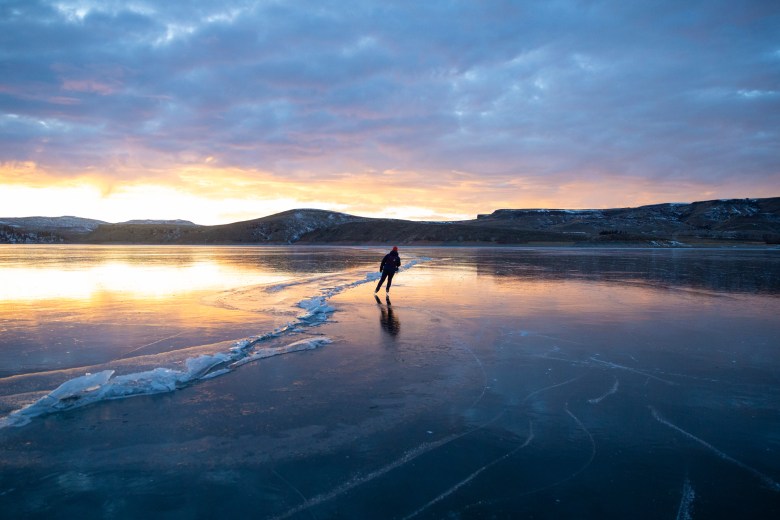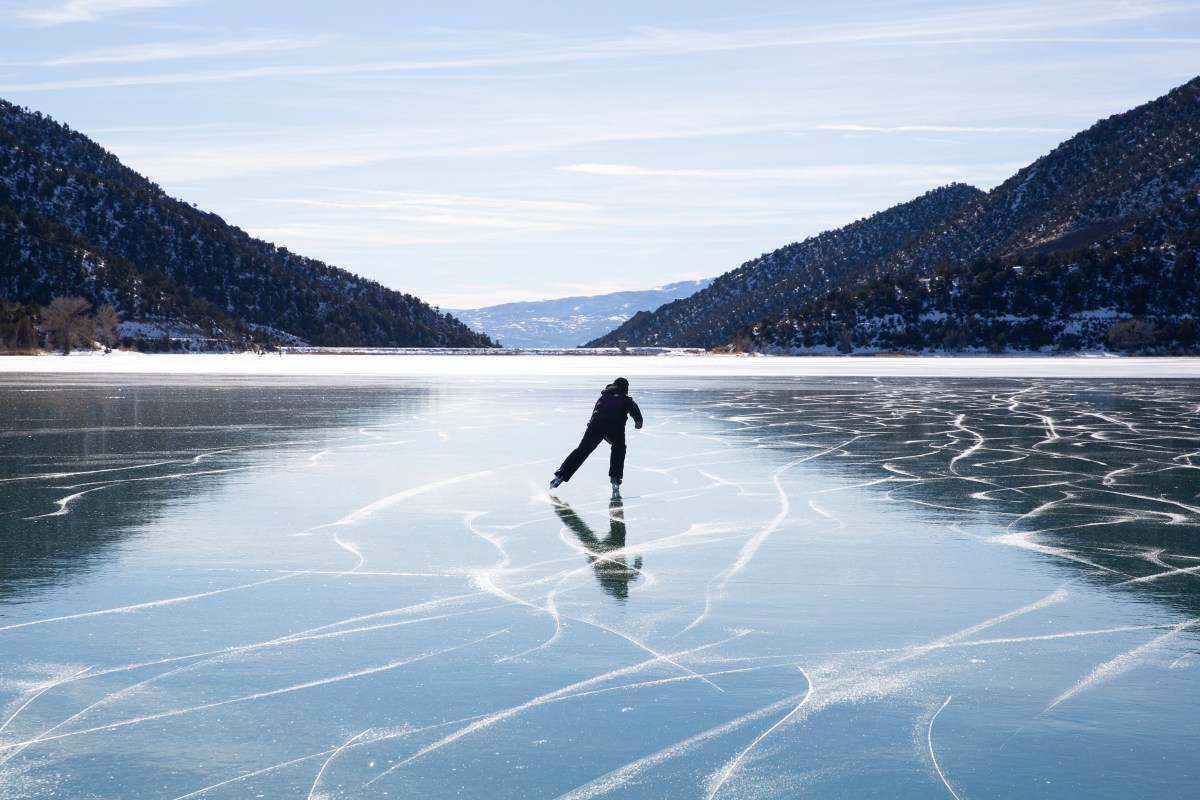“Ooh, the ice is going to be pretty chatty this morning,” Sarah Seibold exclaimed as the sun crested the ridge over western Colorado’s Rifle Gap Reservoir, where about 200 acres of glassy wild ice had just recently frozen solid.
Before a body of water is fully frozen over, the water freezes in sections, thicker portions abutting thinner. Wherever they meet, a ridge forms, similar to those created by the tectonic plates of the Earth’s surface. “I love standing on cracks and seeing them break,” said Seibold, a skater who frequents these stretches of ungroomed ice. When tectonic plates shift, we experience earthquakes, but we can’t always hear smaller adjustments. But when the plates of wild ice shift and crack, ghostly boings echo across the surface, like a chorus sung by malfunctioning robots.
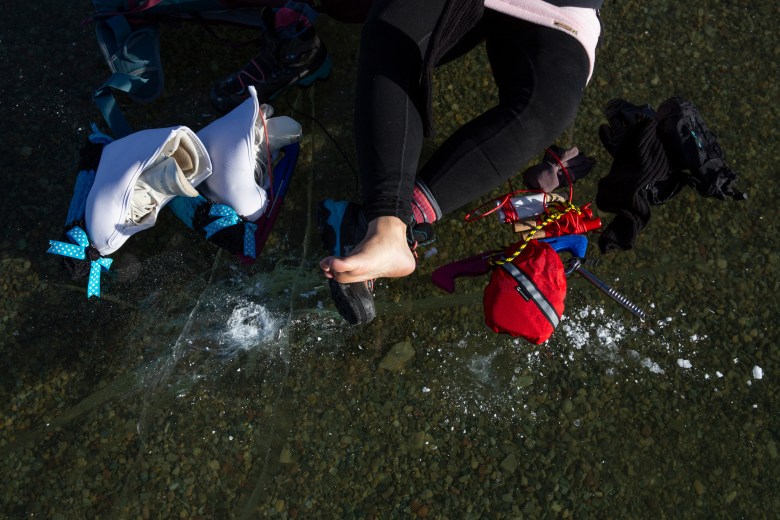
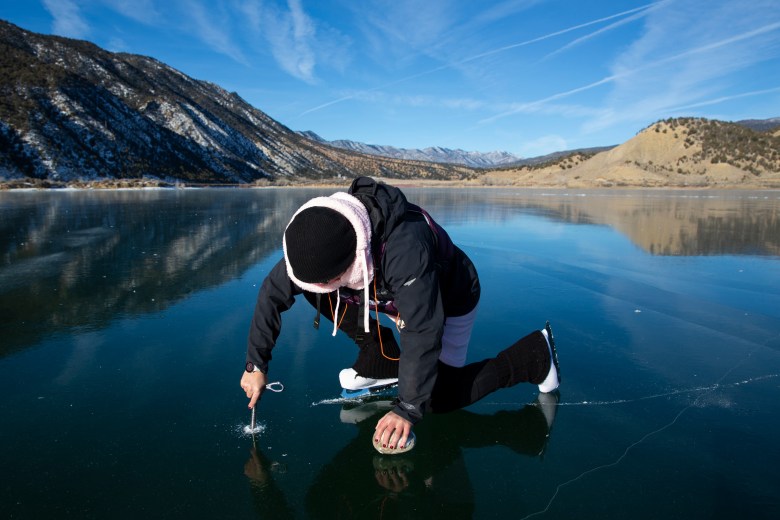
Skating on wild ice requires a constant conversation with it about its current condition. Skating along the reservoir, Seibold tossed a round rock about 15 feet onto the ice that lay ahead. The sound the rock makes when it lands and the geometry of the resulting crack tell her how thick the ice is. “Once it gets high-pitched and Star Wars-y like, that’s when you start to worry.” Afterward, she can measure it more exactly with an ice screw.
Seibold skates along the edge of the Lake Fork Arm of Blue Mesa Reservoir, near Gunnison, Colorado. The uneven surface of wild ice is ideal for practicing for ice cross downhill racing (tap to play video on mobile).
“Once it gets high-pitched and Star Wars-y like, that’s when you start to worry.”
This year’s mild winter has hindered other winter recreation, but wild ice skating flourished in the early part of the season. Temperatures were low enough to freeze reservoirs and rivers, and the ice remained bare of snow that would have made it impossible to skate.
Seibold’s decision to start skating on wild ice was made for practical reasons: As a student at University of Colorado Boulder, she found it hard to find ice time at the university’s rink, and she needed somewhere to prepare for figure-skating competitions. Now she’s based in Montrose, on Colorado’s Western Slope, but her rationale is similar as she trains for the sport of ice cross downhill, where skaters race down an ice track full of turns and jumps. There’s no ice rink in Montrose itself, and the closest one, filled with recreationists circling and kids chasing each other in the wrong direction, is over an hour away. The wide stretches of clear ice on nearby lakes and rivers are well worth the effort it takes to search out suitable conditions and ensure her own safety.
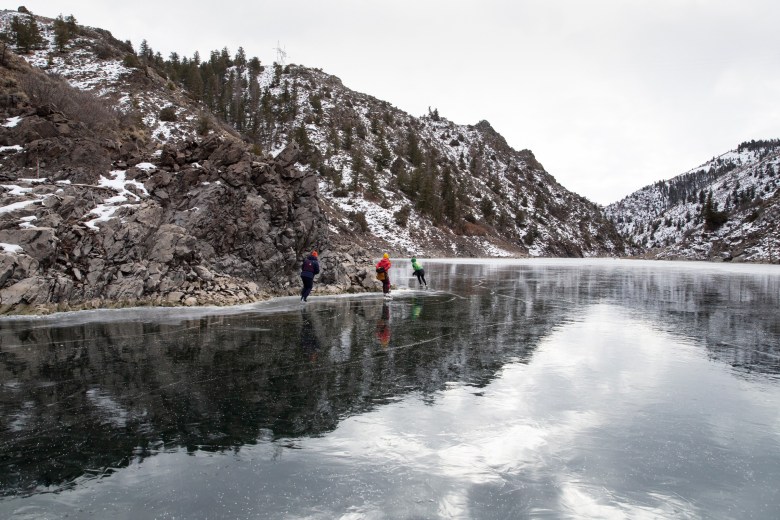

Exploring the surface of the reservoir is much like appreciating the flora and fauna on a hike.

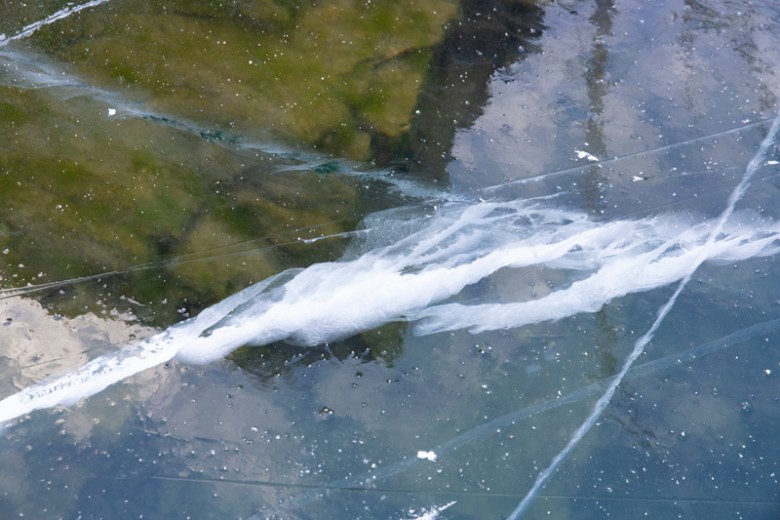
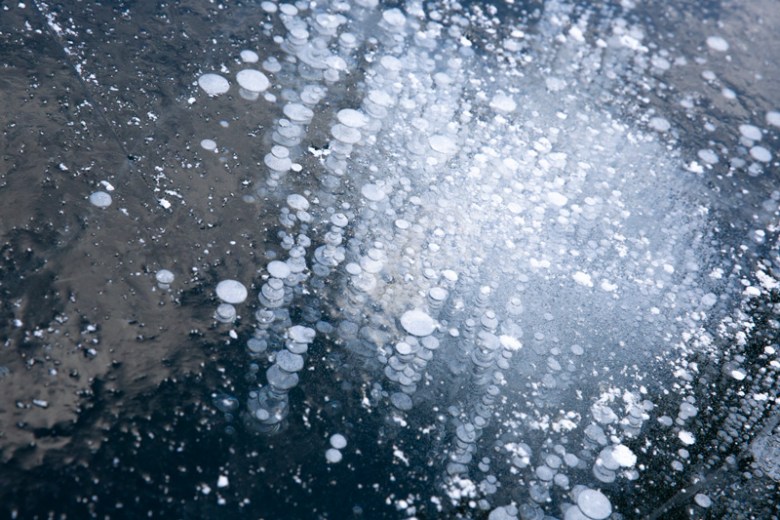
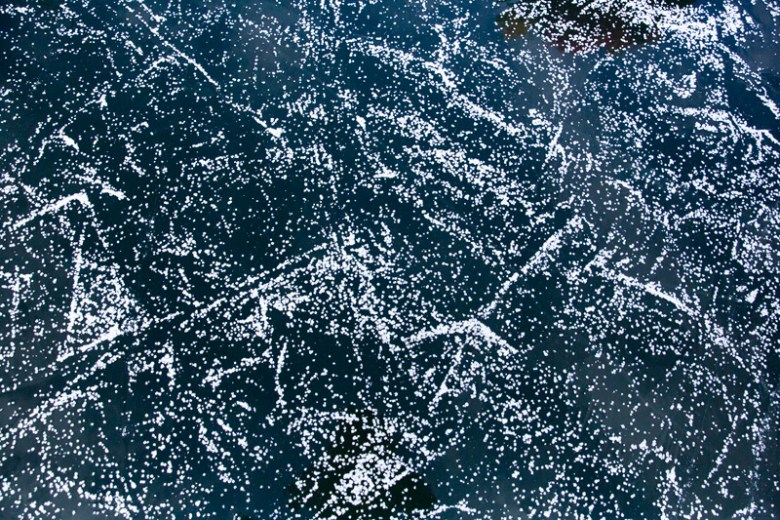
Patterns in the ice at Lake Fork Arm of Blue Mesa Reservoir. Exploring the surface of the reservoir is much like appreciating the flora and fauna on a hike. Patterns include a crack with skate lines, a spiral crack and the lakebed rocks seen through the ice, frozen methane bubbles and frost on the ice surface.
Skating wild ice has also given Seibold a new community. Figure skating tends to be a solo activity, and teammates compete even with each other. But wild ice skating feels like more of a team sport. “It’s nice to have a ton of people who enjoy the same things as you and want to do the same things as you but there’s no stakes,” Seibold said. Laura Kottlowski, a professional wild ice-skating educator, reached out to Seibold after she posted on Instagram about skating Pacific Tarn in Colorado’s Tenmile Range, at 13,420 feet the highest named lake in the U.S. Soon after, they started skating together. “Mountaineering and figure skating are kind of polar opposites in most people’s minds,” Kottlowski said. But Kottlowski and Seibold were determined to pursue both.
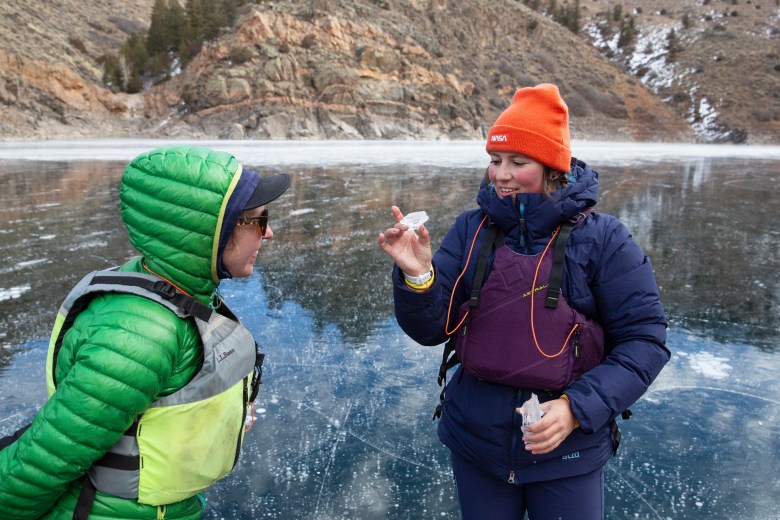
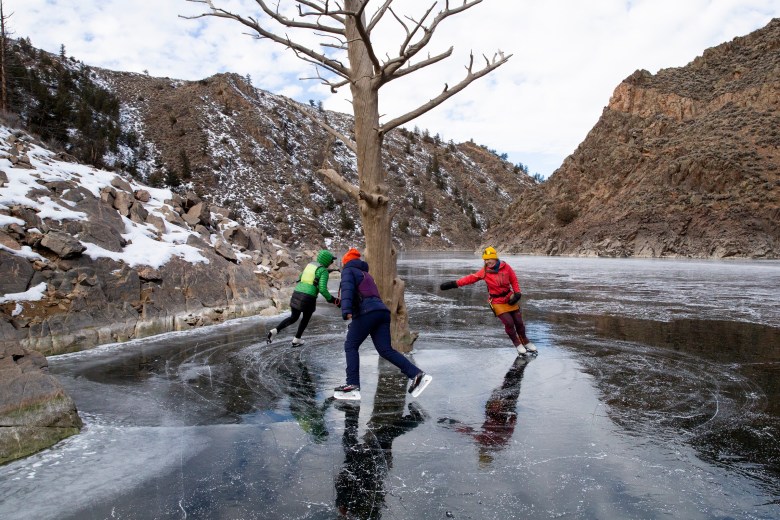


Compared to other winter sports, wild ice skating is relatively affordable. A life vest borrowed from summer storage, ice picks, an ice corer, tow rope, skates and a trusty round rock are all that’s needed. There are even blades that can fit onto Nordic skiing boots. For less than $100, a skater can get out on wild ice.
Still, it comes with its share of danger. In 2022, after 14 years of skating without incident, Kottlowski watched two friends fall through the ice; two other skaters plunged in as well. Kottlowski was able to help rescue her friends and one other skater, but the fourth person died. Kottlowski was the only one skating with safety equipment that day. The experience left her angry at the wild ice skating community for not widely sharing the knowledge that could have prevented the accident. “Since then, I’ve been doing heavy research (on the science) on ice, how it forms and how it degrades.” She shares the information to her 625,000 TikTok followers and also hosts in-person safety workshops. Her first two workshops sold out, and she is working on an online course. “The danger can be mitigated just like any other sport,” Seibold, who has helped with the workshops, said. “Just like you take your avalanche courses and know how to go to safe terrain. If you know how to read the ice, you know how to skate on safe ice.”
